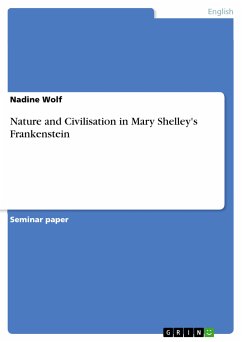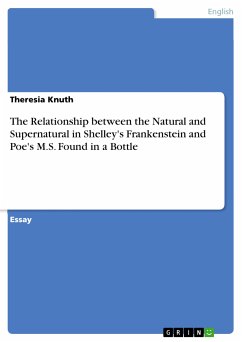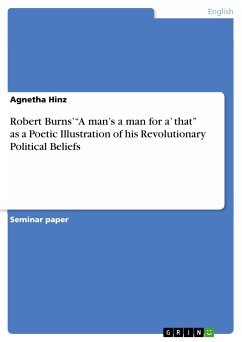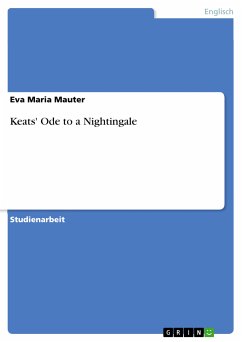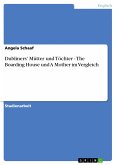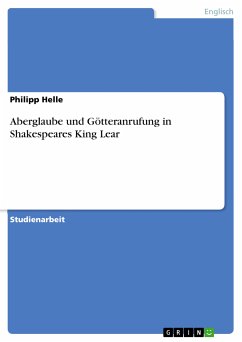Essay aus dem Jahr 2011 im Fachbereich Anglistik - Literatur, Rheinisch-Westfälische Technische Hochschule Aachen, Sprache: Deutsch, Abstract: ... Shelley’s inspiration for ′To A Skylark′ (written in 1820) One source – a note Mary Shelley wrote in 1839 – claims: „In the spring we spent a week or two near Leghorn, borrowing the house of some friends, who were absent on a journey to England. It was on a beautiful summer evening while wandering among the lanes, whose myrtle hedges were the bowers of the fireflies, that we heard the caroling of the skylark, which inspired one of the most beautiful of his poems.” (Wilcox, p. 561) •According to Stewart C. Wilcox, Shelley’s own state of mind around 1820 may have been reflected in the poem as well. (Wilcox, p. 560) Analysis Communicative situation and situation in the poem •The speaker remains anonymous. But one can argue that the speaker actually is a poet himself as he is addressing the skylark several times throughout the poem, asking to ‘teach’ him, as he would not be able to compose a song equally as good as the skylarks. Furthermore the “world” should then be listening to the poet as he listens to the bird now. ==> “Teach me half the gladness/ That thy brain must know/ Such harmonious madness/ From my lips would flow/ The world should listen then, as I am listening now.” (l. 101 – 105) •Addressee: othe speaker in the very first line of the poem cheers to the skylark, addressing him as the “blithe spirit” (l. 1), whose song comes “from heaven or near it” (l. 3) ==> bird is more than just a skylark; it is put close to the divine and supernatural right from the beginning of the poem omystified by describing him as “sprite” (l. 61), ==> the bird becomes a supernatural being •Time: varying ==> evening “In the golden light’ning/ Of the sunken sun” (l. 11 – 12), from that on only settings in comparisons, like dawn (l. 20 – 25), night (l. 26 – 30) •Setting: nature ...
Bitte wählen Sie Ihr Anliegen aus.
Rechnungen
Retourenschein anfordern
Bestellstatus
Storno



